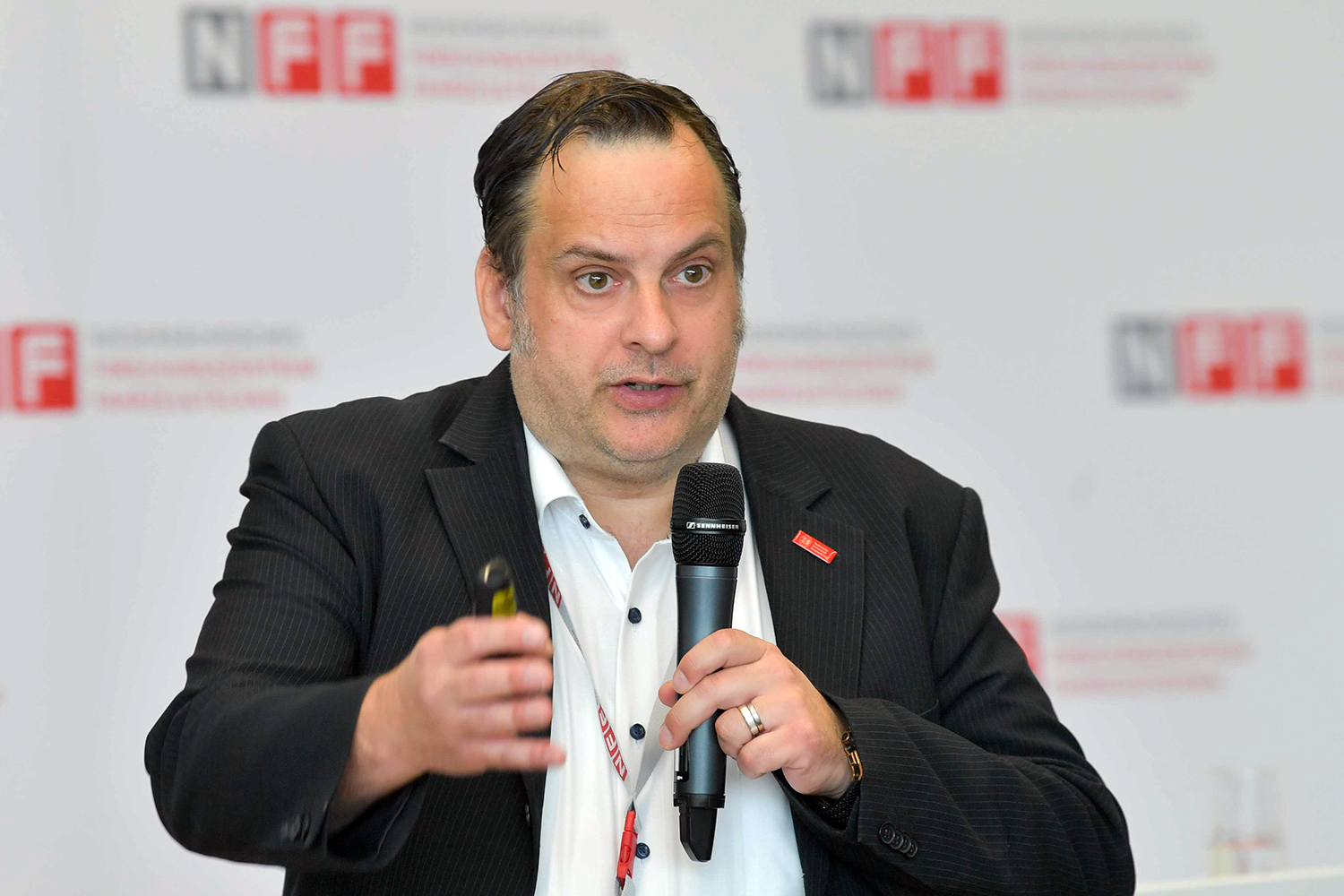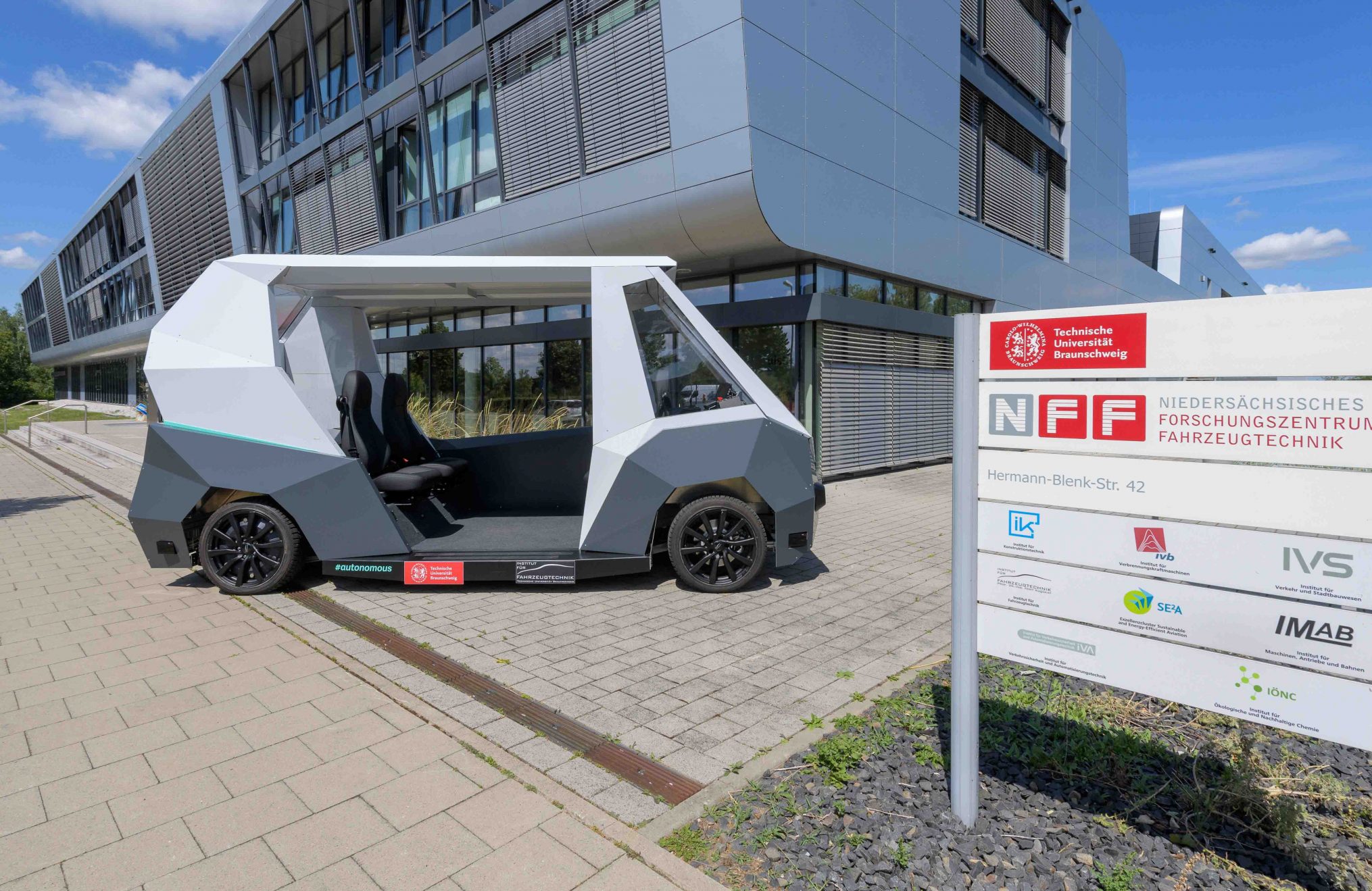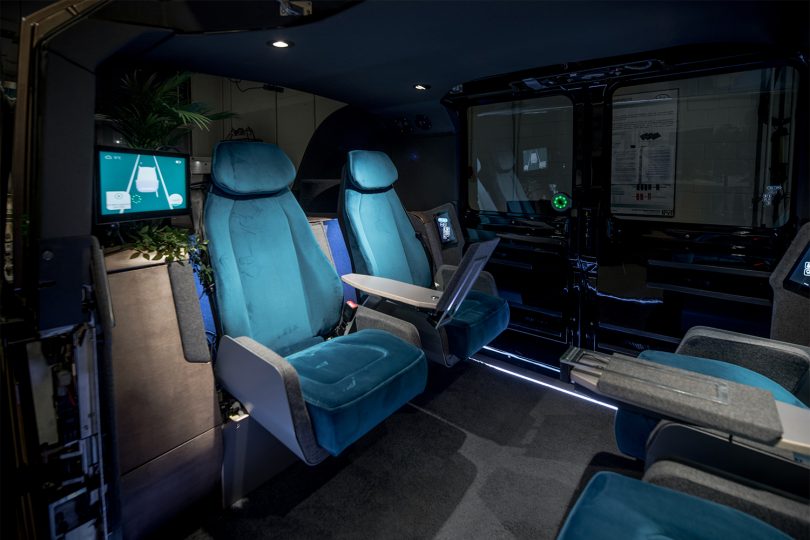“We also have a concept for the last shaded and particularly critical areas” In 2024, the TU research vehicle RAION will be used as a fully automated shuttle
RAION is the latest member of a family of autonomous driving research demonstrators being developed at Technische Universität Braunschweig. The name of the vehicle already indicates how it will be used: With the “Research vehicle for Automated and Intelligent driving in ON-street applications”, researchers are leaving the laboratory and testing the real-life use of new autonomous vehicle concepts. As early as 2024, RAION will be used as a shuttle service at the Braunschweig Research Airport. Professor Roman Henze from the Institute of Automotive Engineering, which is part of the “Automatisiertes und vernetztes Fahrzeug“ (Automated and Connected Vehicle) research area at the Automotive Research Centre Niedersachsen (NFF), tells us more.
Professor Henze, what makes RAION different from previous research vehicles such as TEASY 3?
The main difference lies in the vehicle concept and therefore the use case. The previous vehicles – such as our flagship TEASY 3 – are based on conventional cars and thus address individual mobility. RAION, on the other hand, is designed as an autonomous shuttle to transport several people over short distances in urban areas in a scenario similar to public transport.
Could you tell us something about the development of the vehicle?

Prof. Roman Henze. Photo credit: Isabell Massel/NFF
The RAION test vehicle is based on a rolling chassis that contains all the essential components such as the drive, battery, chassis, etc. The use of such a platform gives us maximum flexibility when it comes to testing new components such as environmental sensors. This allowed my team to build the futuristic structure of the RAION and equip the vehicle with our automated driving system, which is an evolution of the TEASY 3 system.
The research vehicle also uses artificial intelligence. What tasks does it perform here?
The topic of artificial intelligence (AI) is also of great importance in the field of autonomous driving and is reflected in the name of RAION. At our institute, artificial intelligence is used at various points in our driving function, but primarily in the area of perception, i.e. the perception of the environment. An established example is the processing of camera images and the recognition of objects, e.g. other road users such as pedestrians. Machine learning methods are also used to interpret the behaviour of other road users.
What is the purpose of 360-degree sensor technology?
In order for an autonomous vehicle to be able to drive safely on the road, it needs to know its surroundings, and this is exactly what environmental sensing does. By using laser scanners and cameras to capture the environment around the vehicle, we get an almost complete picture of the surroundings. We also have a concept for those last shady or particularly critical areas that uses information from intelligent infrastructure.

The new RAION research vehicle in front of the Automotive Research Centre Niedersachsen in Braunschweig. Photo credit: Isabell Massel/NFF
How does the vehicle orientate itself on the road? Does it learn the road map before use, or are there roadside signs?
Locating the vehicle is an essential task that must be carried out safely. A variety of methods are used. In addition to a high-precision digital map of the surroundings, the system also makes use of distinctive environmental information such as signs, houses and trees. This is complemented by satellite-based positioning and self-motion estimation – similar to today’s smartphone navigation.
When we talk about autonomous vehicles, they are categorised into different levels. RAION is a level 4 vehicle. What does that mean?
Level 4 describes the degree of autonomy of the vehicle. Autonomous driving is categorised from level 0, where the vehicle is driven completely manually, to level 5, where the vehicle can reach any destination completely autonomously – similar to a robo-taxi. Level 2 systems, such as lane departure warning, are widely used today. However, the first Level 3 systems, which allow the driver to turn away from traffic, have recently been approved.
With our RAION, however, we are aiming for level 4 – also known as “fully automated driving”. In this case, the vehicle operates completely autonomously under certain conditions, such as a defined route, and the human driver is completely relieved of the driving task.
From mid-2024, RAION will be in regular use on Hermann-Blenk-Straße at the Braunschweig Research Airport. What will the TU Braunschweig vehicle do?
Behind our research vision and roadmap is the “Circle2Circle” project, initiated with our own resources. RAION will operate between two roundabouts along the Hermann-Blenk-Strasse and test autonomous passenger transport under real-life conditions. The aim is to connect the Automotive Research Centre Niedersachsen (NFF) with other facilities such as the research airport or the research car park.
Once initialised, will RAION be able to drive itself without human intervention, e.g. to a charging station at the end of the working day? In other words, how much effort will be required, especially considering that an active driver will be “saved”?
That is our goal: to demonstrate the technical feasibility of a Level 4 autonomous vehicle without a safety driver. Of course, as you mentioned, this also raises many questions about the actual journey, such as autonomous charging. We also have research activities in this area, which are currently being explored and tested in the context of autonomous parking in the research car park in Braunschweig. In addition to the autonomous approach to charging stations, the use of charging robots is also being investigated.
What data can you collect on this test section and what critical questions will it be used for in subsequent research projects?
We are collecting a wide range of data. In addition to the obvious experience for improving the algorithms, we also plan to conduct user studies to adapt the vehicle’s behaviour to the needs of the passengers. This data will also be important for later commercial application, to ensure that the technical developments meet the needs of the users.
How safe is the vehicle? What safety precautions have you taken? For example, is there an external control centre?
Our security concept has not yet been published due to the current competitive situation. However, we can reveal that we are working with dual-redundant intelligence on the RAION and that we will use the support of a “third eye” in the infrastructure in critical situations.

